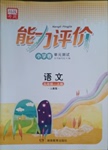题目内容
When did you ___ him?
- A.know
- B.knowing
- C.get to know
- D.get to knowing
know是持续性动词。一般不用when来提问持续性动词,而get to know就解决了这问题,D项语法结构错误。

 能力评价系列答案
能力评价系列答案 唐印文化课时测评系列答案
唐印文化课时测评系列答案There are some very good things about open education. This way of teaching allows the students to grow as people, and to develop their own interests in many subjects. Open education allows students to be responsible for their own education, as they are responsible for what they do in life. Some students do badly in a traditional classroom. The open classroom may allow them to enjoy learning. Some students will be happier in an open education school. They will not have to worry about grades or rules. For students who worry about these things a lot, it is a good idea to be in an open classroom.
But many students will not do well in an open classroom. For some students, there are too few rules. These students will do little in school. They will not make good use of open education. Because open education is so different from traditional education, these students may have a problem getting used to making so many choices. For many students it is important to have some rules in the classroom. They worry about the rules even when there are no rules. Even a few rules will help this kind of students. The last point about open education is that some traditional teachers do not like it. Man y teachers do not believe in open education. Teachers who want to have an open classroom may have many problems at their schools.
You now know what open education is. Some of its good points and bad points have been explained. You may have your own opinion about open education. The writer thinks that open education is a good idea, but only in theory. In actual fact, it may not work very well in a real class or school. The writer believes that most students, but of course not all students, want some structure in their classes. They want and need to have rules. In some cases, they must be made to study some subjects. Many students are pleased to find subjects they have to study interesting. They would not study those subjects if they did not have to.
1.Open education allows the students to _________. .
|
A.grow as the educated |
B.be responsible for their future |
|
C.develop their own interests |
D.discover subjects outside class |
2.Open education may be a good idea for the students who _____.
|
A.enjoy learning |
|
B.worry about grades |
|
C.do well in a traditional classroom |
|
D.are responsible for what they do in life. |
3.Some students will do little in an open classroom because____.
|
A.there are too few rules |
|
B.they hate activities |
|
C.open education is similar to the traditional education |
|
D.they worry about the rules |
4.Which of the following is NOT mentioned in the passage?
|
A.Some traditional teachers do not like it. |
|
B.Many teachers do not believe in open education. |
|
C.Teachers may have problems in open classrooms. |
|
D.The teacher’s feelings and attitudes are important to the students. |
5.Which of the following best summarizes the passage?
|
A.Open education is a really complex idea. |
|
B.Open education is better than traditional education. |
|
C.Teachers dislike open education. |
|
D.The writer thinks that open education is a good idea in practice. |
Cole Bettles had been rejected by a number of universities when he received an e-mail from the University of California, San Diego, last month, congratulating him on his admission and inviting him to tour the campus. His mother booked a hotel in San Diego, and the 18-year-old Ojai high school senior arranged for his grandfather, uncle and other family members to meet them at the campus for lunch during the Saturday tour.
“They were like ‘Oh my God, that’s so awesome (棒的)’, ” Bettles said. Right before he got in bed, he checked his e-mail one last time and found another message saying the school had made a mistake and his application had been denied.
In fact, all 28, 000 students turned away from UC San Diego, in one of the toughest college entrance seasons on record, had received the same incorrect message. The students’ hopes had been raised and then dashed (破灭) in a cruel twist that shows the danger of instant communications in the Internet age.
UCSD admissions director Mae Brown called it an “administrative error” but refused to say who had made the mistake, or if those responsible would be disciplined (受训)。
The e-mail, which began, “We’re thrilled that you’ve been admitted to UC San Diego, and we’re showcasing (展示) our beautiful campus on Admit Day, ” was sent to the full 46, 000 students who had applied, instead of just the 18, 000 who got in, Brown said.
The error was discovered almost immediately by her staff, who sent an apology within hours.
“It was really thrilling for a few hours; now he’s crushed (压垮), ” said Cole’s mother, Tracy Bettles. “It’s really tough on them.”
The admissions director said she was in the office on Monday until midnight answering e-mails and phone calls from disappointed students and their parents. She said she took full responsibility for the error. “We accessed the wrong database. We recognize the incredible pain receiving this false encouragement caused. It was not our intent.”
1.How many students received an admission e-mail from the University of California, San Diego (UCSD)?
A. 18, 000 B. 28, 000 C. 46, 000 D. 18
2. Which of the following statements is TRUE about the wrong e-mail message?
|
A.The mistake was made on purpose to cause pain among the applicants. |
|
B.It was UCSD admissions director Mae Brown who made the mistake. |
|
C.UCSD admissions staff got information from the wrong database. |
|
D.Staff did not discover the mistake until next Monday. |
3.The admissions director Mae Brown did what she could to __________.
|
A.protect the person who made the mistake |
|
B.punish herself for the mistake |
|
C.make up for the mistake |
|
D.help the disappointed students enter the university |
4.What does the passage mainly talk about?
A. Cole Bettles was admitted to the UCSD.
B. Cole Bettles was rejected y a famous university.
C. USCD admissions office often makes “administration errors”。
D. False admission information raised the students’ hopes and then dashed them.